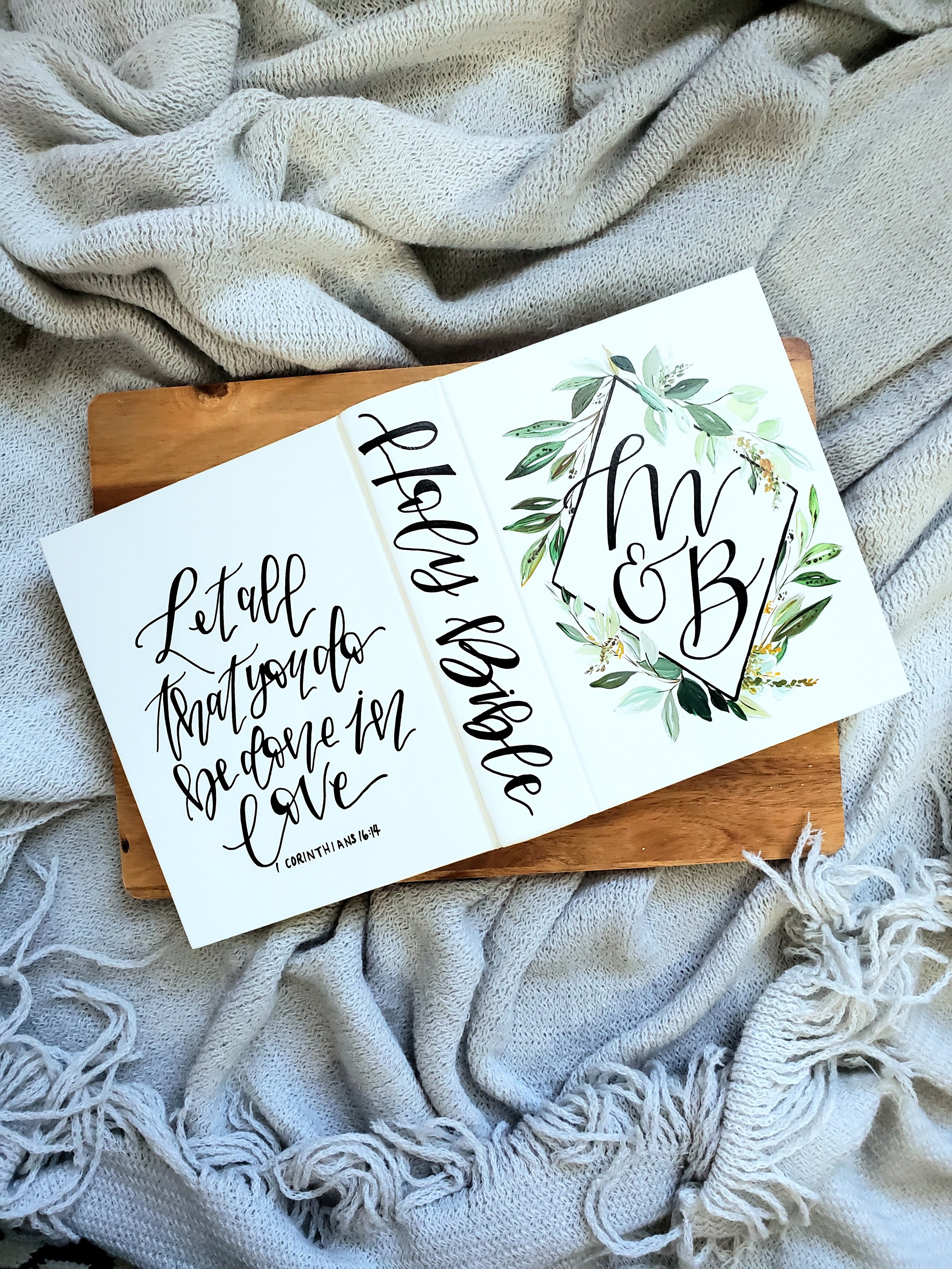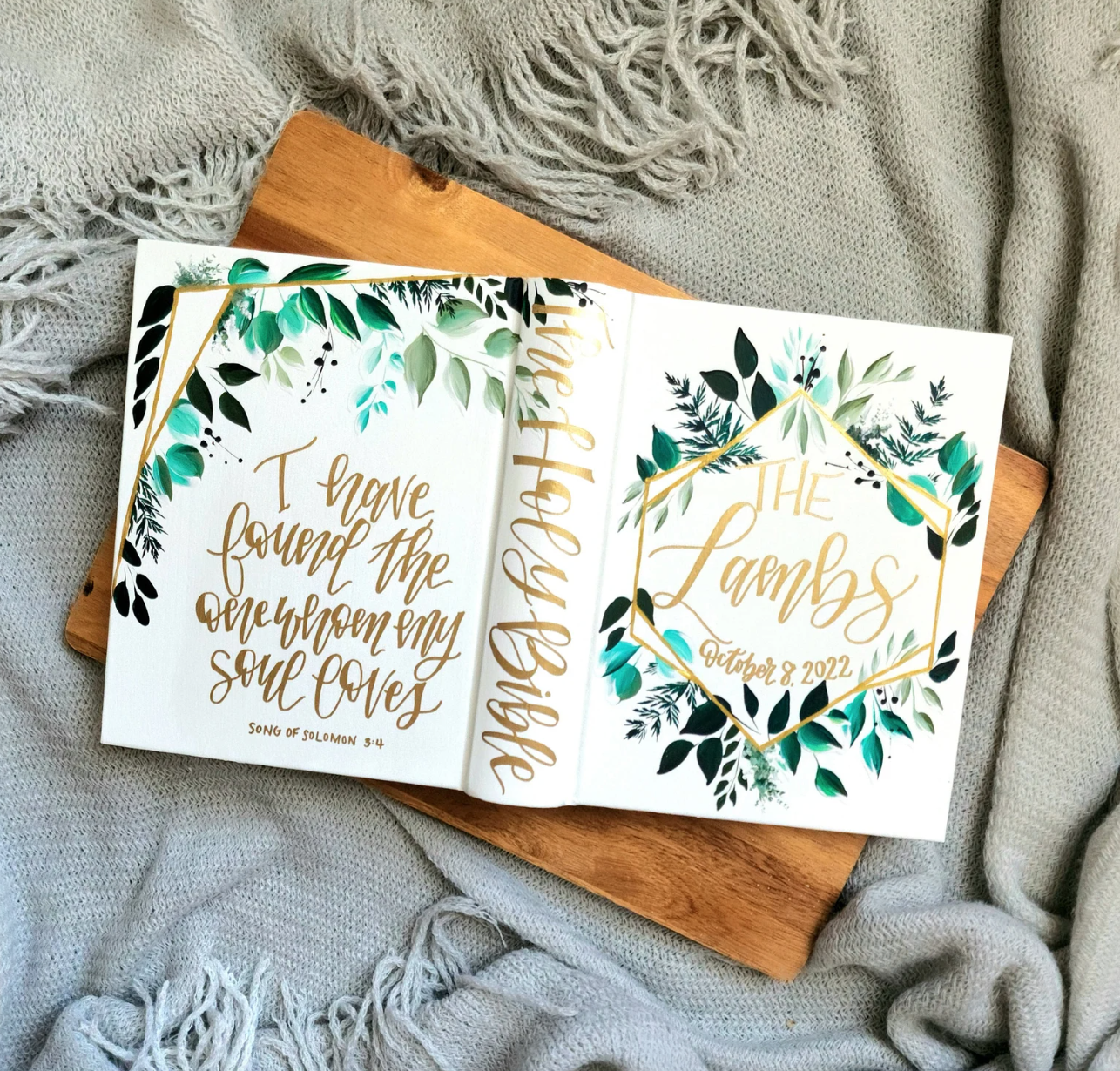The Guide to Bible Versions & Which One You Should Get
/If you’ve ever looked at Bibles online or in a bookstore, you’ll immediately be overwhelmed by the incredible amount to choose from. Not only different colors and cover designs, but also options like reference Bibles, study Bibles, chronological Bibles, etc., and the biggest distinction among them all…
Versions.
I’d like to tell you I have it all figured out and can explain exactly what makes each one different and which is the best, but I am honestly not an expert, just someone here to (hopefully) help guide people in the right direction and help them find something they’ll enjoy and get use out of.
I want to attempt to keep this short, so here goes!
So…What is a Bible ‘Version’ and why do people read different ones?
To start, “versions” refer to when you see letters like NIV, ESV, KJV, NKJV, NASB, NLT, etc. There are quite a lot of them!
Basically, all Bibles today are translations of the original Hebrew, some with more literal/exact translations (KJV is a common one), and others that have been modernized so that they’re easier for people to read and understand.
KJV and similar translations are a bit like trying to understand Shakespeare, but some people prefer that because they don’t want any of the meaning skewed in any way. I, for one, just want to understand! I trust that the authors and publishers were inspired by God and did their best to remain true to the text, so even if the wording isn’t spot one, I know God can use it to help me get to know him better, and that’s all I really want!
The picture here is a little visual that shows the most common versions and what category they fall in, plus an explanation of the difference (borrowed from A Symphony of Praise!)
Here is an example of the difference in translations.
We’ll do a little comparison with Romans 12:10 from a few of the most common versions from each category.
King James Version (KJV): Be kindly affectioned one to another with brotherly love; in honour preferring one another;
New International Version (NIV): Be devoted to one another in love. Honor one another above yourselves.
The Message (MSG): Love from the center of who you are; don’t fake it. Run for dear life from evil; hold on for dear life to good. Be good friends who love deeply; practice playing second fiddle.
This really helps get the point across! The first one has some older language that we don’t use as much today, the 2nd is more likely how we would word it present-day, and the third takes it to another level to really express what the verse means.
Which do I choose?
Truthfully, only you can answer this, but here are a few thoughts.
First, if you are Catholic, there are specific Bibles made for Catholicism because they actually have more books than standard Christian Bibles. A few of the most common Catholic versions include NRSV, NABRE, NASB, RSV-CO (Catholic Edition), ESV-CE.
Regardless of whether you’re Christian or Catholic, though, if you’re new to reading the Bible, it’s best to start with something pretty text-accurate, but also something you can understand (because the most important things is just that you’re reading, which won’t happen if you don’t understand!).
Here are my recommendations to start: NKJV, NIV, or CSB. They are fairly straightforward translations that will give you a solid understanding of the Bible, and then if you need more context, you can always compare with NLT, ESV, or something similar to help you grasp the meaning better.
Truthfully, many people don’t recommend ever grabbing the “paraphrase”-level translations unless you have quite a deep understanding of the Bible because they are inspired by the authors themselves, meaning they’re not as doctrinally sound and can be a little misleading in some ways. So, enter as your own risk I suppose!
Hopefully that helped a bit! If you’re still a little unsure or overwhelmed, I’d recommend doing some research on your own and asking your pastor or other friends you trust to help you pick a Bible that’s a good fit.
From there, here are a few more options to keep in mind once you choose a version:
Regular Bible with just the verses (single column or double column)
Red letter Bible with Jesus’s words in red font
Journaling Bible with lined margins for taking notes in
Study Bible that has notes, descriptions, maps, charts, and more
Reference Bible that cross references words used in different verses (shown in the footnotes)
Chronological Bibles
And more!
Below you can see a double column regular Bible, study Bible, red letter large print Bible, and a journaling Bible.
Looking for a personalized Bible?
Once you’ve chosen the version you want, if you’re hoping to get it personalized, you can get a hand painted or engraved Bible over at Ross Paint Shop! We have several different versions and types of Bibles and covers available, and we can also typically order what you want if it’s not something we already offer.
Here are a few examples of Bibles that we’ve done! Have a question about personalizing your own or about the different Bible options? Send us a message on Etsy or email us at rosspaintshop@gmail.com.
Happy reading!!
























